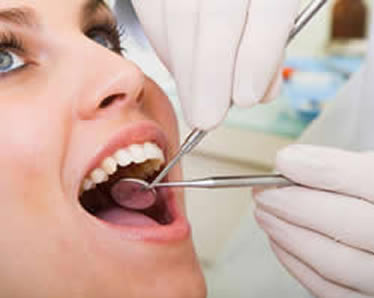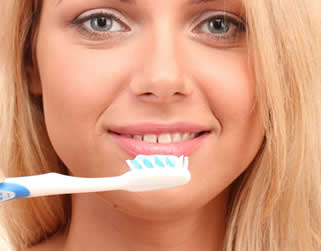Apr 21, 2017 | Blackstone Dental Central Falls RI Dentist
 Root canal therapy is a procedure performed to save an infected or damaged tooth. There are several factors that can lead to the death of a tooth. Often, symptoms may present themselves that could indicate the need to seek further evaluation by your dental professional:
Root canal therapy is a procedure performed to save an infected or damaged tooth. There are several factors that can lead to the death of a tooth. Often, symptoms may present themselves that could indicate the need to seek further evaluation by your dental professional:
- Severe tooth pain that continues over a long period of time and possibly interrupts your sleep or your normal daily activities.
- Persistent pain that radiates into your ear, jaw, or temples.
- Extreme sensitivity and pain when biting down or touching your tooth.
- Sensitivity to extreme temperatures, hot and cold, even when the source of the heat or cold is no longer present.
- Darkening or graying of a tooth that is noticeably different than the color of surrounding teeth.
- Swelling along the gum line around the damaged or decayed tooth that often resembles a pimple and may discharge pus or smell or taste bad.
- A broken or chipped tooth that causes considerable pain.
- A large visible cavity or crack that compromises the integrity of the tooth.
These symptoms do not necessarily mean you will definitely need root canal therapy, but if they persist, it is advisable to seek quick attention from your dentist. Being aware of these signs could mean the difference in saving or losing a tooth. The sooner your dentist is able to diagnose and treat a dying tooth, the more likely they will be able to save it and preserve your healthy smile.

Aug 21, 2017 | Blog, Blackstone Dental Central Falls RI Dentist
Keeping a healthy smile and healthy body are both linked to practicing proper oral hygiene. The mouth is the entering point for both good and bad things into your body, so it’s important to keep your mouth clean as much as possible to reduce the effects of potentially harmful substances.
Once acid and bacteria enters your mouth through things like foods or drinks, if given an opportunity to thrive can damage your teeth. A sticky material called plaque will develop that can harm your tooth enamel, and can also allow bacteria to gain access to the rest of your body. The harmful effects of that may include cardiovascular diseases, respiratory disorders and more.
Another damaging element that enters your mouth is sugar, which can react with the bacteria and negatively impact your teeth, gums and bones. If left to prosper, you may end up even facing gum disease or tooth loss.
The good news is that proper oral hygiene can help prevent such outcomes.
Daily dental care is the best way to take control of your oral health. Here are some guidelines:
- Brush your teeth at least twice a day using fluoride toothpaste and a soft-bristled toothbrush.
- Use dental floss every single day to eliminate food particles between your teeth and plaque buildup.
- Use an anti-bacterial mouth rinse approved by your dentist.
- Visit your dentist every six months for checkups and professional teeth cleanings.
- Don’t put off getting any recommended dental treatments so that problems don’t worsen into more serious conditions.
These techniques aren’t that difficult to accomplish, especially when you realize that you’re likely avoiding the pain and expense of extensive dental procedures in the future. A healthy and attractive smile is possible by simply protecting it with good oral hygiene.

Aug 28, 2017 | Blog, Blackstone Dental Central Falls RI Dentist
Have you found yourself standing in front of the oral care aisle at your local drug store or grocery store, overwhelmed by the number of “whitening” products available for your teeth? Whitening products come in all types, from toothpastes to gels to creams, strips or rinses. Each product has “whitening” in the title and each one alleges to whiten your smile without a trip to the dentist. Do these products really work? Are they the best, safest, or most efficient way to brighten your teeth?
Meanwhile, when you visit your dentist, you see photos of patients who have undergone teeth bleaching who have had dramatic results. This can leave you wondering, what’s teeth bleaching and is it better than teeth whitening? Can “whitening” give me the same results as bleaching? What choice should I make for my own smile goals?
“Whitening” is a fairly generic term that can be applied to any product that removes stains and debris from a tooth’s natural surface. Most of the time this is achieved through mild abrasives that remove layers of discoloration built up over time. Whitening products can help your smile be brighter, but they are unable to change what is ultimately the natural white color of your tooth.
Bleaching products are products labeled specifically by the FDA as able to whiten teeth beyond their natural color. Bleaching treatments all contain some kind of hydrogen peroxide or carbamide peroxide that reacts with certain wavelengths of light. Once activated, the peroxide releases molecules of oxygen that are able to penetrate the tooth enamel itself and break down and remove even the most stubborn of tooth stains.
If you’re thinking about whitening your teeth, talk to your dentist about which products can be best utilized to meet your goals. It’s possible that over-the-counter products will work for you. If you’re trying to reach an even brighter shade of white, your dentist might recommend in-office care and teeth bleaching. Get the advice you need and move toward a whiter smile today.

Sep 7, 2017 | Blog, Blackstone Dental Central Falls RI Dentist
Your family dentist is fully aware of the extreme importance of establishing and continuing a routine of excellent oral hygiene. This information is crucial to each member of your family in order to have a lifetime of good oral health. Whether your children are just learning about oral hygiene or if your older family members need to refresh their habits, your family dentist is the one to turn to for advice.
Your family dentist can tell a lot about you, about your nutritional habits and your lifestyle choices, just by looking in your mouth. In fact, your dentist can often be on the front line in diagnosing overall health issues. Studies have shown that a very high percentage of health issues manifest themselves in oral symptoms such as dry mouth, inflamed gums, mouth ulcers and gum disease. Systemic diseases including leukemia, kidney disease, pancreatic cancer, diabetes, oral cancer and pancreatic cancer all have oral manifestations.
In addition to providing clues as to problems elsewhere in the body, your oral hygiene can directly affect the conditions in your body. Research has shown that infection and bacteria in the mouth can lead to pregnant mothers having low birthweight children, or babies who are born prematurely. As well, conditions in the mouth can contribute to heart disease, diabetes and cancer. The mouth and the body are linked!
It is essential that you brush following each meal, or twice a day, especially before bedtime. Flossing each evening is vital; floss is able to reach the places between your teeth and beneath the gum line in order to remove food debris and bacteria that can lead to infection. Replace your toothbrush every six weeks or as needed.
If you have questions about your oral hygiene habits, ask your family dentist today. You’ll be happy you did!

Sep 14, 2017 | Blog, Blackstone Dental Central Falls RI Dentist
If you think the placement of veneers involves a major dental overhaul, think again. A wonderful solution for patients who wish to improve the quality of their smile while avoiding changes to the tooth structure are no-prep or minimally invasive veneers.
Lumineers are one of the most popular of the “no-prep” variety of veneers. Lumineers use an exceptionally thin veneer layer that is placed on the front side of your teeth. Unlike traditional veneers, the placement of Lumineers does not require the modification of the natural tooth structure or the use of temporary veneers.
Some of the advantages of Lumineers include:
- The placement of Lumineers is minimally invasive and does not require shots, drilling, or anesthesia.
- The teeth do not need to be ground, filed, or cut down with the placement of Lumineers.]
- With Lumineers, treatment is faster than with traditional veneers, and there is no need to use temporary veneers.
- Lumineers can permanently whiten, shape, and lengthen your teeth as well as serve as “instant” orthodontia by covering gaps and misalignments.
- Because there is no need to alter the tooth structure, the placement of Lumineers is painless and especially attractive for patients with highly sensitive teeth.
- Lumineers restore and strengthen your teeth.
- If you are unhappy with the results, treatment with Lumineers is completely reversible because the tooth structure has not been altered in any way.
Lumineers can help to improve a wide array of dental concerns, including chipped, cracked or misshapen teeth, gaps, and discoloration. If you are unhappy with the appearance of your smile, talk to your dental professional about how Lumineers can quickly and easily help you achieve the look you desire.

Sep 21, 2017 | Blog, Blackstone Dental Central Falls RI Dentist
Often one of the first clues to a person’s age is the appearance of their smile. Unfortunately for many people, their teeth age quicker than the rest of their physical features. As you age, your oral health and aesthetics are often compromised by staining foods and beverages, certain medications, teeth grinding, decay or periodontal disease. These factors can cause gums to recede and teeth to yellow, loosen, crack, break, or even fall out.
Growing older does not mean your looks have to grow older, too. Cosmetic dental technology offers a wide range of options to rejuvenate your smile.
Some of the treatments available to restore your youthful looks include:
- CEREC restorations
- Porcelain veneers
- Invisalign or SPEED braces
- Dental Implants
- Implant supported dentures
- Gum treatment
- Professional teeth whitening
If you suffer from multiple dental concerns, you may consider a full mouth reconstruction, which combines restorative and cosmetic dentistry treatments to both improve the function and beauty of your smile. Your dentist may recommend, for example, tooth colored fillings to replace old metal fillings, implants to replace dentures, and follow it all up with professional teeth whitening to create the finishing touch.
You may be surprised by how quickly and easily many of these procedures provide the results you desire. Some treatments can be completed in as little as one office visit. With advances in sedation dentistry, you can breeze through your time in the dental chair remaining relaxed and comfortable. Gone are the painful and extensive dental treatments you may remember from your younger years. Consult with an experienced cosmetic dentist to find out more about how cosmetic dentistry can return the youthful spark to your smile.
 Root canal therapy is a procedure performed to save an infected or damaged tooth. There are several factors that can lead to the death of a tooth. Often, symptoms may present themselves that could indicate the need to seek further evaluation by your dental professional:
Root canal therapy is a procedure performed to save an infected or damaged tooth. There are several factors that can lead to the death of a tooth. Often, symptoms may present themselves that could indicate the need to seek further evaluation by your dental professional:






